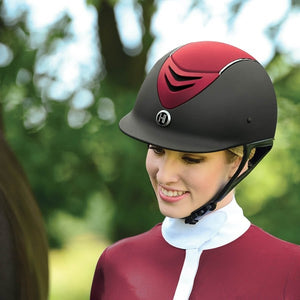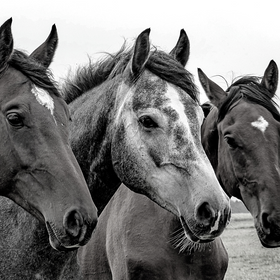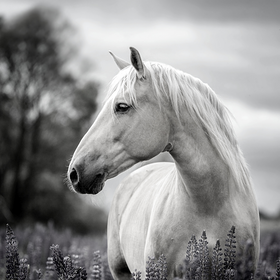
Spring Grooming Tips
The long, long winter is finally coming to an end. We are all looking forward to Spring, warmer weather, longer days, and more time in the barn. As the horses start to feel the warmer weather, they will start to shed their winter coats. Even if your horse is body-clipped and blanketed all winter, spring shedding will still happen.
Good grooming is important for general horse care, but thorough spring grooming can help remove mud, dirt, and annoying shaggy hair. Grooming your horse has a lot of benefits including increasing circulation and incorporating the natural oils produced by the skin.
Shedding hair is annoying, messy, and seems to keep coming no matter how much you brush. Using a curry comb, grooming mitt, or shedding blade can help make the shedding season a bit easier. Curry in a circular motion starting at your horse’s neck, working down and back toward the hind end. This helps to loosen the dead hair and lift mud. Be cautious on sensitive areas like legs. Don’t forget the underside of their belly. This area gets very muddy and the mud will hold the shedding hair in big clumps.
Use the shedding blade in the direction of the hair growth, avoiding legs. Shedding blades are too “sharp” for leg areas. Once you have finished with the shedding blade, use a stiff body brush to remove dirt and hair. Make sure to take short, brisk strokes to effectively remove build-up.
Finally, use a soft body brush on your horse’s legs. You may need to remove hair from the brush every couple of strokes. As you work, take note of injuries, parasites, and irritations that may have gone unnoticed during the winter.
If you really can’t take spring shedding, you can choose to clip them. Check out our body clipping article for more information on picking the right type of body clip for your horse.
After you’ve finished your horse’s body, you can move to their mane and tail. This can vary a little bit on the breed of horse and your riding discipline. Start by removing any burrs — detangler helps a lot with this. You can use a damp body brush to help smooth the mane on one side. You can leave the mane as is, or trim/pull the mane.
Tails should be carefully trimmed to avoid it getting stepped on. This can easily be done with a comb and a pair of scissors. After thoroughly combing out the tail, grab the tail just below the fetlock. Trim any hair below this point at an upward angle from back to front.
If the weather is warm enough, a spring bath can be a wonderful way to help with shedding and mud. Thoroughly wet your horse and using a gentle shampoo lather into the coat. Make sure to gently work the shampoo into the coat with a rubber scrubber. Rinse all of the shampoo and remove excess water with a sweat scraper. Repeat the process for the mane and tail. You can use conditioner on the mane and tail if desired, but be sure to rinse out thoroughly as this can attract additional dirt. If it is a bit cool outside, you can use a cooler to keep your horse warm while they dry.





